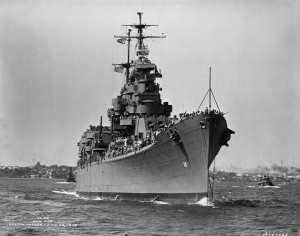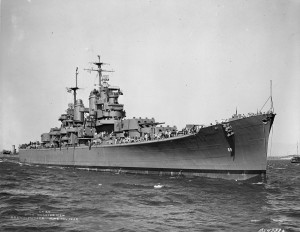I finished uploading a set of pictures I received from the national archives (the above picture is one of the entries). Please click on the left hand tab ‘Official Photos CA-69’. Most were shot in boston harbor after the first shakedown cruise. One was taken off the coast of California as the Boston was being escorted by the USS Grand Island (PF14).
I’ve made great progress on the crew list, soon the enlisted men will be complete.
I’ve added three new links, two are to the Rye Fire department of Rye New York which found themselves as the owner of the USS Boston’s anchor, the first story is trying to figure it out, the second story found some history as to how the anchor showed up in Rye New York. The third new link is for CA-69 Sailors who are still alive who want to join an organization devoted to US Cruisers, this site is added to the already existing USS Boston Shipmates site which is devoted to sailors and their spouses from all the the previous USS Boston’s, including CA-69.
I’ve deleted the chat function. We only had one person sign up and I was getting about 10 spam registrations a day. If we get 4-5 people who think this would be a good idea, then use the contact us form and let me know.. For now, just comment on a blog by clicking on the blog title and clicking ‘comment’.


